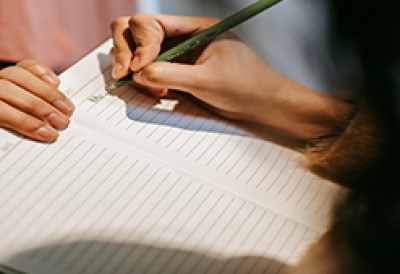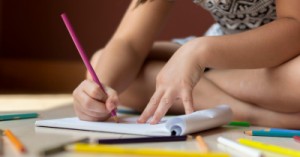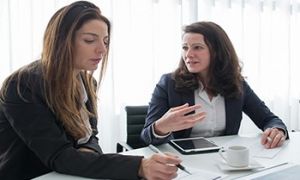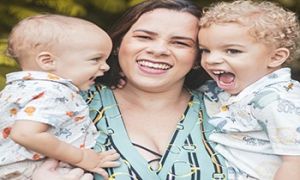The following provides practical examples of critical reflections in early childhood education, drawn from real-world scenarios.
Critical Reflection Examples
Supporting a Child’s Transition
Focus: A child, recently enrolled, was experiencing separation anxiety during morning drop-offs.
Description: Over the past week, the child cried intensely when their parent left. I noticed they clung to their parent and resisted entering the room. I initially responded by offering toys and distractions, but the child remained distressed.
Analysis: I felt frustrated and concerned that my strategies weren’t helping. I began to question whether I was truly supporting the child’s emotional needs or just trying to stop the crying. I also wondered how my response aligned with our centre’s philosophy of building secure attachments.
Evaluation: While I was attentive, I realized I hadn’t prioritized building a trusting relationship first. I was focused on quick fixes rather than emotional connection. I also hadn’t communicated enough with the family about strategies that work at home.
Connection to Theory: Drawing on Bowlby’s attachment theory and the EYLF principle of secure, respectful relationships, I recognized the importance of consistency and emotional availability in easing transitions.
Improvement: I decided to greet the child at the door each morning and invite them to help with a simple task (e.g., watering plants) to create a sense of purpose and routine. I also spoke with the family to co-develop a transition plan.
Action Plan:
- Build a predictable morning routine.
- Assign a consistent educator to greet the child.
- Use visual cues (e.g., a photo schedule) to help the child understand what comes next.
- Reflect weekly on the child’s progress and adjust strategies as needed.
Reflecting on Group Time Engagement
Focus: Children were disengaged during group time.
Description: Children were disengaged during group time. The story may have been too long and not interactive enough, and the timing (just before lunch) likely contributed.
Analysis: I felt discouraged and questioned whether the story or my delivery was the issue. I realized I hadn’t considered the group’s energy levels or interests at that time of day.
Evaluation: Group time was scheduled right before lunch, when children were tired and hungry. The story may have been too long and not interactive enough.
Improvement: I’ll try shorter, more interactive stories and include movement or puppets. I’ll also trial moving group time to earlier in the morning.
Action Plan:
- Trial group time earlier in the day when children are more alert.
- Choose shorter, interactive stories with props or puppets.
- Observe children’s engagement and adjust strategies weekly.
- Invite children to help choose stories to increase ownership.
Reflecting on Cultural Inclusion
Focus: Celebrating cultural diversity meaningfully.
Description: A Diwali craft activity felt tokenistic. There was little depth or family involvement, and it didn’t reflect genuine cultural learning.
Analysis: I felt uneasy—it seemed like we were ticking a box rather than fostering genuine understanding. I hadn’t consulted families or explored the cultural significance with the children.
Evaluation: The activity didn’t reflect our commitment to inclusion. It missed an opportunity to build cultural competence.
Improvement: I’ll invite families to share traditions, include books and music from diverse cultures year-round, and reflect with the team on how to embed cultural learning meaningfully.
Action Plan:
- Consult with families about cultural traditions they’d like to share.
- Incorporate cultural stories, music, and food throughout the year.
- Create a calendar of cultural events with input from the community.
- Reflect with the team monthly on how inclusion is embedded in practice.
Reflecting on Outdoor Risky Play
Focus: Children climbing high on outdoor equipment.
Description: A child climbed high on equipment. The educator’s initial reaction was fear-based, not grounded in observation or risk-benefit thinking.
Analysis: I questioned whether I was prioritizing safety over learning. I realized I hadn’t assessed the child’s capability or considered the benefits of risk-taking.
Evaluation: My response was based on fear, not observation. The child was confident and capable.
Improvement: I’ll review our risk-benefit assessments, observe more closely before intervening, and discuss with the team how to support safe risk-taking.
Action Plan:
- Review and update the centre’s risk-benefit assessments.
- Observe children’s capabilities before intervening.
- Provide staff training on supporting safe risk-taking.
- Document children’s physical development and confidence in outdoor play.
Reflecting on Family Communication
Focus: A parent expressed concern that they weren’t informed about their child’s day.
Description: The parent mentioned they felt “out of the loop” and unsure about their child’s learning and wellbeing.
Analysis: I felt surprised—I thought our daily updates were sufficient. But I realized we mostly shared logistical info (meals, sleep) and not much about learning or social moments.
Evaluation: Our communication lacked depth and didn’t reflect the child’s experiences meaningfully. I hadn’t asked the family what kind of updates they valued.
Action Plan:
- Introduce a weekly “learning snapshot” with photos and reflections.
- Ask families how they prefer to receive updates (verbal, written, digital).
- Include children’s voices in documentation (e.g., quotes, drawings).
- Review communication practices with the team each term.
Reflecting on Transitions Between Activities
Focus: Children became unsettled during transitions between indoor and outdoor play.
Description: Several children resisted coming inside, leading to tears and tension.
Analysis: I felt rushed and frustrated. I realized transitions were abrupt and didn’t give children time to adjust or feel in control.
Evaluation: The transitions didn’t support children’s need for predictability and autonomy. I hadn’t prepared them or offered choices.
Action Plan:
- Use visual timers and cues to signal upcoming transitions.
- Offer transition roles (e.g., “bell ringer,” “line leader”) to promote agency.
- Reflect with the team on how to make transitions more child-led.
- Observe and document how children respond to new strategies.
Reflecting on Inclusive Language
Focus: A colleague used gendered language during play (e.g., “boys don’t cry”).
Description: I overheard the comment and felt uncomfortable but didn’t address it at the time.
Analysis: I felt conflicted—wanting to advocate for inclusive language but unsure how to approach the conversation respectfully.
Evaluation: Avoiding the issue didn’t align with our centre’s values of equity and respect. I missed an opportunity to support professional growth.
Action Plan:
- Initiate a team discussion on inclusive language and unconscious bias.
- Share resources and examples of affirming language.
- Reflect on my own language use and model inclusive practices.
- Suggest adding inclusive language goals to our QIP.
Further Reading
Educator's Guide To Critical Reflections
How To Write A Critical Reflection In Early Childhood
Reflection Vs Critical Reflection







 Here is the list of the EYLF Learning Outcomes that you can use as a guide or reference for your documentation and planning. The EYLF
Here is the list of the EYLF Learning Outcomes that you can use as a guide or reference for your documentation and planning. The EYLF The EYLF is a guide which consists of Principles, Practices and 5 main Learning Outcomes along with each of their sub outcomes, based on identity,
The EYLF is a guide which consists of Principles, Practices and 5 main Learning Outcomes along with each of their sub outcomes, based on identity, This is a guide on How to Write a Learning Story. It provides information on What Is A Learning Story, Writing A Learning Story, Sample
This is a guide on How to Write a Learning Story. It provides information on What Is A Learning Story, Writing A Learning Story, Sample One of the most important types of documentation methods that educators needs to be familiar with are “observations”. Observations are crucial for all early childhood
One of the most important types of documentation methods that educators needs to be familiar with are “observations”. Observations are crucial for all early childhood To support children achieve learning outcomes from the EYLF Framework, the following list gives educators examples of how to promote children's learning in each individual
To support children achieve learning outcomes from the EYLF Framework, the following list gives educators examples of how to promote children's learning in each individual Reflective practice is learning from everyday situations and issues and concerns that arise which form part of our daily routine while working in an early
Reflective practice is learning from everyday situations and issues and concerns that arise which form part of our daily routine while working in an early Within Australia, Programming and Planning is reflected and supported by the Early Years Learning Framework. Educators within early childhood settings, use the EYLF to guide
Within Australia, Programming and Planning is reflected and supported by the Early Years Learning Framework. Educators within early childhood settings, use the EYLF to guide When observing children, it's important that we use a range of different observation methods from running records, learning stories to photographs and work samples. Using
When observing children, it's important that we use a range of different observation methods from running records, learning stories to photographs and work samples. Using This is a guide for educators on what to observe under each sub learning outcome from the EYLF Framework, when a child is engaged in
This is a guide for educators on what to observe under each sub learning outcome from the EYLF Framework, when a child is engaged in The Early Years Learning Framework describes the curriculum as “all the interactions, experiences, activities, routines and events, planned and unplanned, that occur in an environment
The Early Years Learning Framework describes the curriculum as “all the interactions, experiences, activities, routines and events, planned and unplanned, that occur in an environment


